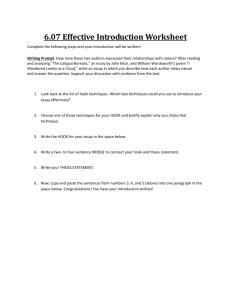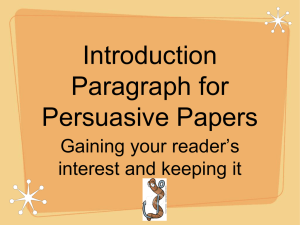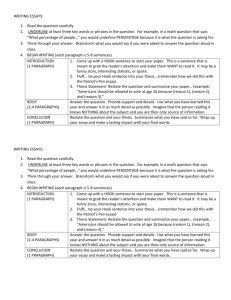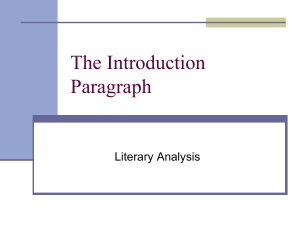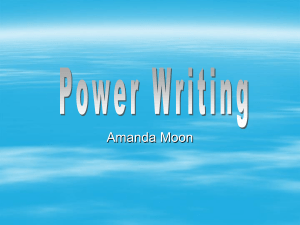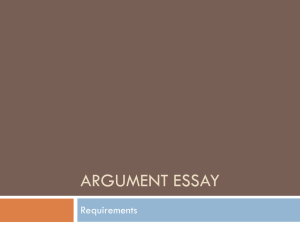Conclusion Paragraphs
advertisement
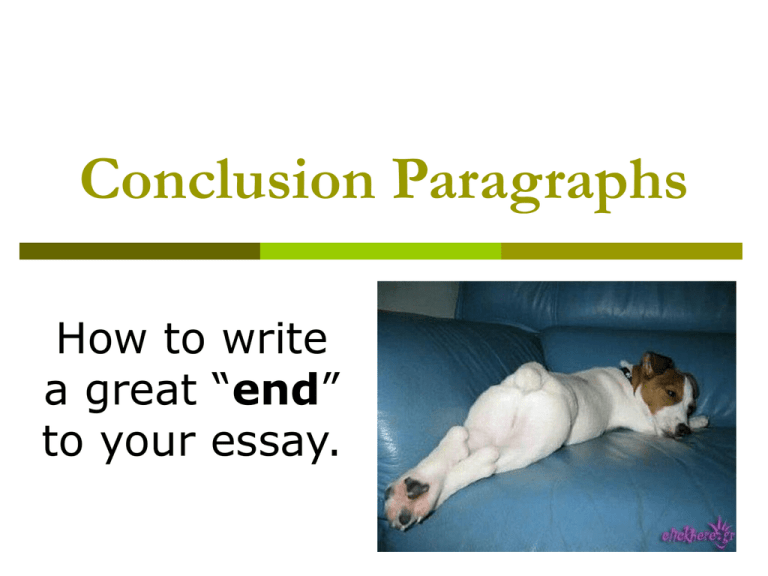
Conclusion Paragraphs How to write a great “end” to your essay. Different Ways to Write Conclusions Just like the introductory paragraph, there are a litter of ways to write a conclusion paragraph. You need to find a conclusion paragraph that passes this test. The Test… 1. The conclusion needs to be engaging and grammatically correct. 2. The conclusion needs to answer the questions WHAT? So WHAT? 3. Many great conclusion make a reference back to the hook. 4. The conclusion sums up the thesis again but uses new words and ideas. It’s ok for the conclusion to be short but it must pass the test! Rule 1: The conclusion must be engaging and grammatically correct. Don’t be lazy! If your conclusion is boring or you were too lazy to make sure that it was written correctly, then you will leave a bad impression with the reader. You want to end on a strong note. Rule #2: The conclusion needs to answer the questions: what? So what? Don’t hide the point you are trying to make! Drive the point home! What are you trying to say? Why is it important? Rule #3:If you can, refer back to the hook in some way. Don’t leave the reader hanging. If you started with a great hook, pull it back in the conclusion. This gives your essay a sense of coming full circle. For example, here’s a hook for “The Most Dangerous Game” In this world, sometimes the hunter becomes the hunted. Now, here’s the conclusion sentence that refers back to the hook. While it would be better to be the hunter, being the hunted allows a character the chance to be more sympathetic. Rule #4: The conclusion sums up the thesis again but uses new words and ideas. Remember how you used a “dumb doughnut” for the conclusion sentence in a body paragraph? Well, you are trying to do the same thing here. DON’T REPEAT THE THESIS. Find a new way to say what you are explaining. Your conclusion should look different than the intro. It’s important to love your conclusion!

